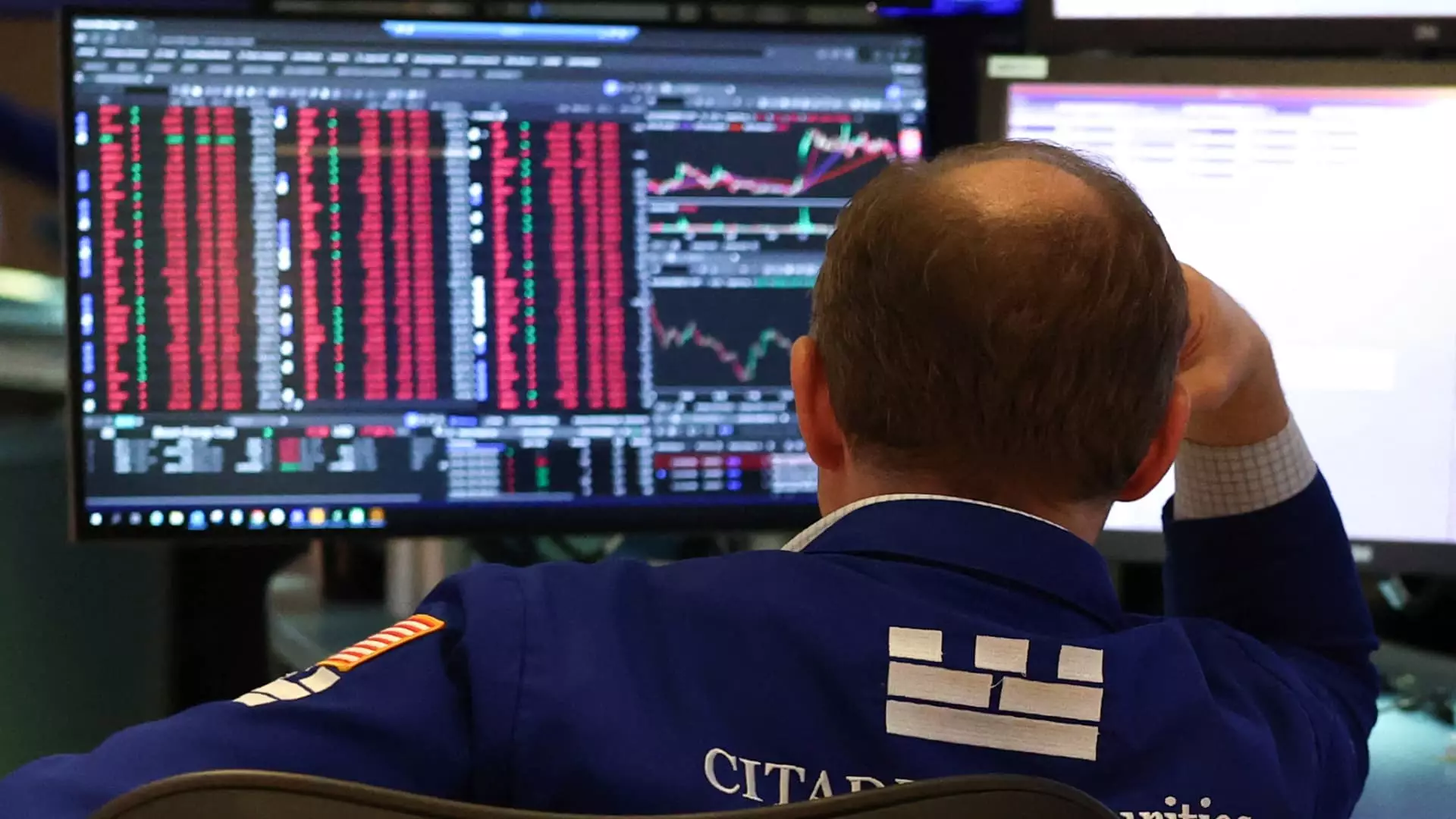In the tumultuous world of finance, the recent drop in global bond yields exemplifies just how finely balanced the precarious equilibrium of the market is. Following former President Donald Trump’s latest tariff announcement, investors have been sent scrambling for safety, triggering a swift decline in yields. The yield on Germany’s 10-year bund, a benchmark in the euro area, plummeted from 2.72% to 2.59% in just a few days, reflecting an undeniable flight towards government debt—an age-old safe haven amid economic turbulence. When yields drop, it signifies increased demand for such government securities, painting a picture of anxiety among stakeholders who fear the repercussions of escalating trade tensions.
The drastic shifts in yield rates are not mere economic trivia; they symbolize a broader sentiment of dread that grips investors whenever uncertainty looms on the horizon. As former economic paradigms crumble and policies seem to be dictated by whims rather than reason, the market buzzes with a palpable anxiety. Rabobank analysts noted that unless there’s a reversal in Trump’s tariff strategy, the unpredictability of policy determination could further erode investor confidence. This compounding uncertainty should disturb us all, as instability in financial policies often heralds long-term repercussions for both the economy and the citizenry.
Recessions on the Radar
Stateside, the 2-year Treasury yield has dropped to levels not seen since September 2022, hovering at about 3.58%. Of greater interest to many is the implication of these declines for the broader economy. The prevalent theme is a looming recession, as banks are increasingly viewed as bellwethers for economic health. The alarms are sounding across the bond market, evidenced by falling treasury yields; they serve as ominous indicators that a recession is creeping into the consciousness of economic decision-makers. The flight to cash reflects a cautiousness—a skepticism that might have seemed fringe a mere month ago is now the prevailing mindset.
Susannah Streeter of Hargreaves Lansdown articulated a sentiment bubbling beneath the surface: market actors are looking for refuge from an approaching storm, and this urgency speaks volumes about how delicate the current financial climate truly is. The implications of these trends extend beyond mere market fluctuations; they weave into the very fabric of societal stability and economic equity.
Bond Market: The Uncertain Safe Haven
While bonds may have continually offered a refuge for anxious investors during this chaotic phase, the sustainability of this trend remains questionable. George Lagarias, chief economist at Forvis Mazars, remarked on the current rally in bonds, positioning it within a context of an “overbought global equity market.” It diminishes the notion that bonds are an infallible safe haven. If the economic landscape stabilizes, will there still be a mad dash toward safety? In fact, the volatility inherent in current events suggests that these market movements may be transient rather than lasting.
The reality is that inflation is still a prevalent threat. Investors are right to be skeptical of committing long-term to bonds when the specter of inflation lingers. Additionally, banks might aggravate supply pressures by reclassifying bonds from “held to maturity” to “available for sale,” introducing additional uncertainties into this seemingly safe environment.
The Role of Central Banks
The interplay of central banks complicates matters further. They hold significant sway over market dynamics and have already demonstrated readiness to intervene. Central banks could act in a multitude of ways—extending credit lines, engaging in bond purchases, or adjusting interest rates. These are not mere reactions; they represent a comprehensive framework that shapes our economic future. However, the reliance on central banks to bail out troubled bonds raises critical questions: Are we creating a dependency on these institutions, and if so, what are the long-term ramifications?
In a world increasingly driven by nationalistic policies and erratic management, it is crucial to remain vigilant as economic uncertainties threaten traditional paradigms. When the safety of the bond market is the subject of debate, what is truly at stake is not merely financial stability but the very foundation of economic confidence itself.


Leave a Reply